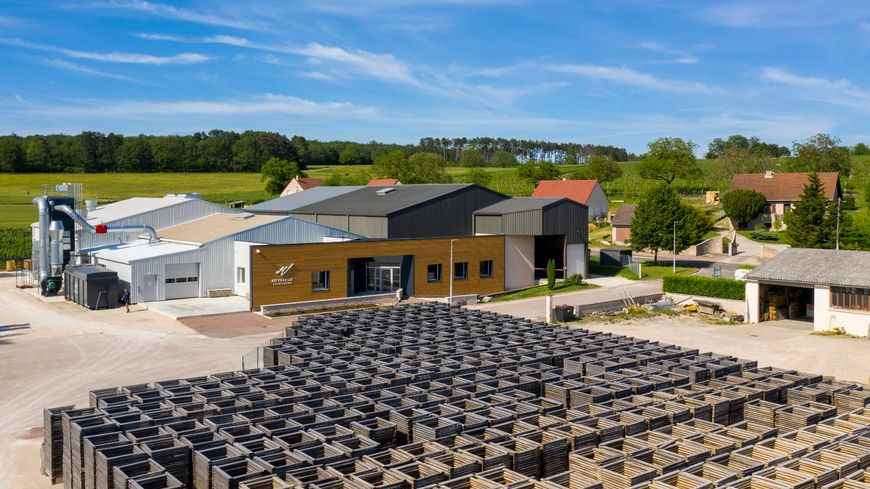It’s not just Burgundy wines that seduce the whole world. Our barrels also travel around the world. In Villers-la-Faye, near Beaune, the Meyrieux cooperage doubles the surface area of its workshops. This SME with 12 employees sees the future in a big way. It will increase its production sharply in the coming months because the foreign market is in demand of “made in Burgundy” barrels. Meyrieux barrels can be found as far away as New Zealand. We take stock of this strong demand with Fréderic Naud, the director of this company:
France Bleu Bourgogne: you have just doubled the surface area of your workshops. Is the cooperage sector doing well for you?
Fréderic Naud: The turnover of the Meyrieux cooperage is 4 million and we have seen good growth of around 30% over the last five years. Today, about 20% of our turnover is made in Burgundy. And it’s true that in recent years, our winegrowers haven’t necessarily been helped by the weather conditions. So 80% of our sales are exported. We are in all the wine regions of the world that make good quality wine, such as Spain, Italy, but also the USA and New Zealand.
– Michael Joly
What are your perspectives ?
Today, we release about 6,000 barrels a year. With our new tool, we now have a capacity of 10,000 barrels. This is now our medium-term objective.
How much does a home-made barrel sell for?
In Burgundy, we are around 700 €. We do a little more than half of our volumes in Burgundian barrels, so 128 litres. It is the spearhead of the company and it is the spearhead of the Burgundian cooperage. We see an evolution towards slightly larger containers 300, 350, 400, 500 litres. But the Burgundian model remains the essence of our activity.

– Michael Joly
Precisely, the fact of being coopers in Burgundy helps to sell well?
Yes, Burgundy is a real, real added value, both for the wines and for the cooperage. And today, it really is a very important selling point.
Are you also affected by the rise in raw materials?
Yes. The oak used to make our barrels comes from the forests of the Vosges in the Massif Central. We dry the wood for 3 years, so we have stock right now, but the oak is also coveted by the Chinese who import a lot of it, and like the Ukrainian market, a major supplier in Europe is disrupted, we imagine that they will fall back on our markets, and this will eventually drive up prices

– Michael Joly
Are you betting on producing more, does that require recruiting?
It is very difficult to find people who have the skills. So we train a lot on the spot. We are constantly looking for volunteers who like manual work, who like wood, the raw material. Today, we are twelve people in the company. The ideal would be to be about fifteen, or even between 15 and 20 people within two or three years.
